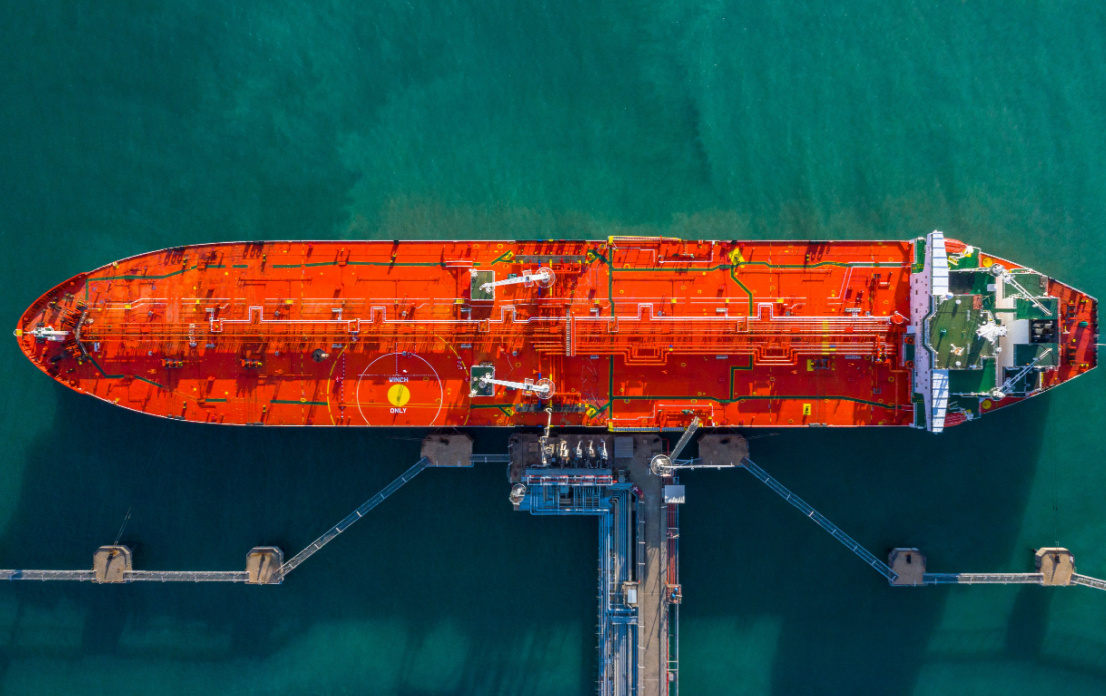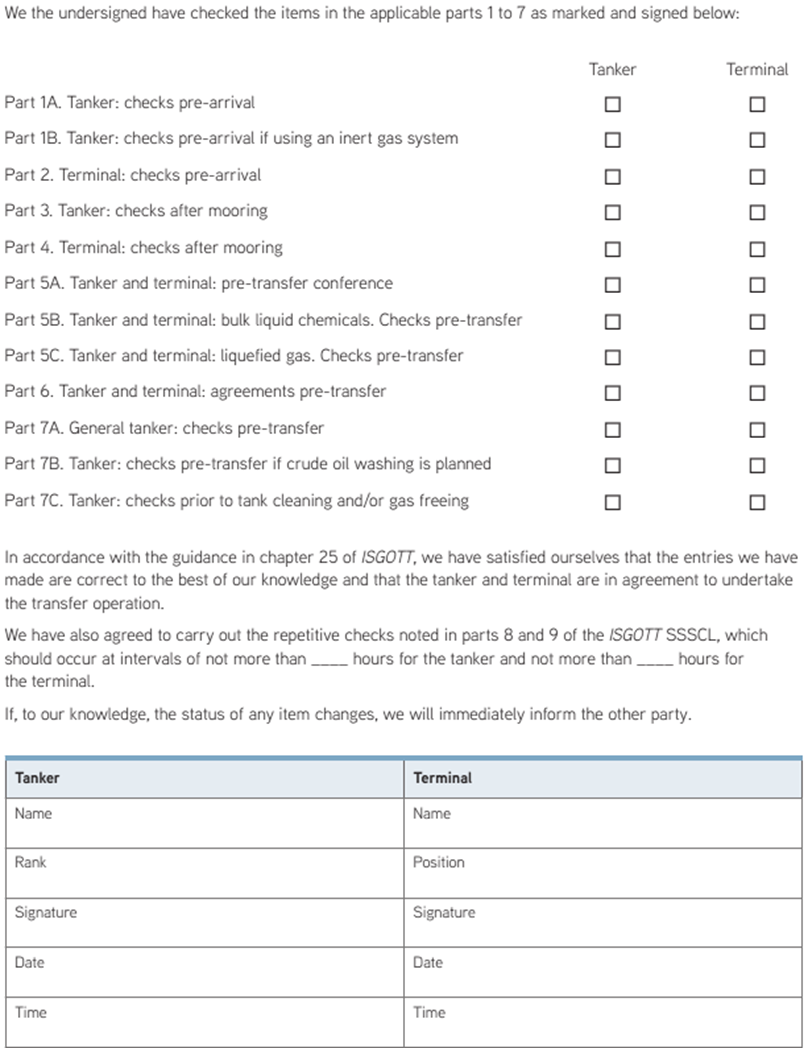When a vessel has been nominated to load crude oil, the planning should start as soon as possible.
If not received, the following should be requested for cargo planning:
• MSDS for the cargo to be loaded
• Quantity to be loaded (like min/max intake or vessels option +/- x %)
• Cargo density
• Any draft restriction at the loading terminal
• If known, any draft restriction at the discharge port
• If heating instruction applies
• Prepare loading plan based on the available cargo information
Composition of the ship/shore safety checklist
The checklist has four main sections:
• Pre-Arrival checks
• Checklist after mooring
• Checks pre-transfer (including agreements)
• Summary of repetitive checks during and after transfer, until the tanker departs

Credit to: Avigator Fortuner / Shutterstock.com
Before arrival loading terminal
• Pre-arrival check lists to be completed as per ISGOTT checklist Part 1A and 1B
• Check how many loading arms that will be connected and size of the connections
• Check that all cargo tank high level alarms are operative
• If heating instruction applies, heating coils should be pressure tested
• If no heating instruction applies, heating coils to be blown and blanked off
• Check that the oxygen content in the cargo tanks is within required limits
All fast at loading terminal
• Complete the ship/shore safety checklist – after mooring, as per ISGOTT checklist Part 3
Prior to cargo transfers
• Complete the ship/shore safety checklist – Checks pre-transfer as per ISGOTT checklist Part 5A, 6 and 7A
• The checklist shall be completed in cooperation with the terminal representative (normally the loading master)
Declaration

Source: Skuld